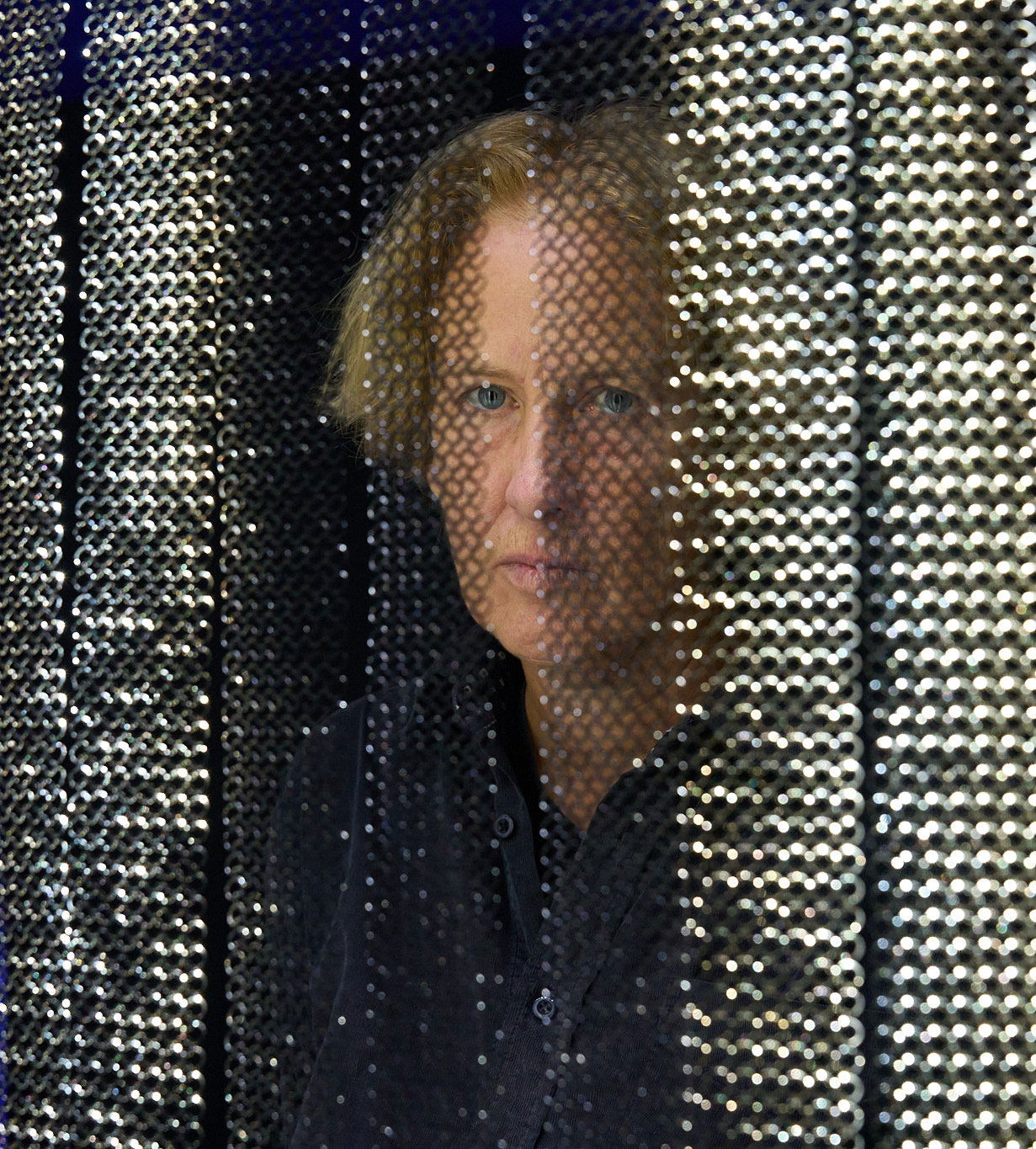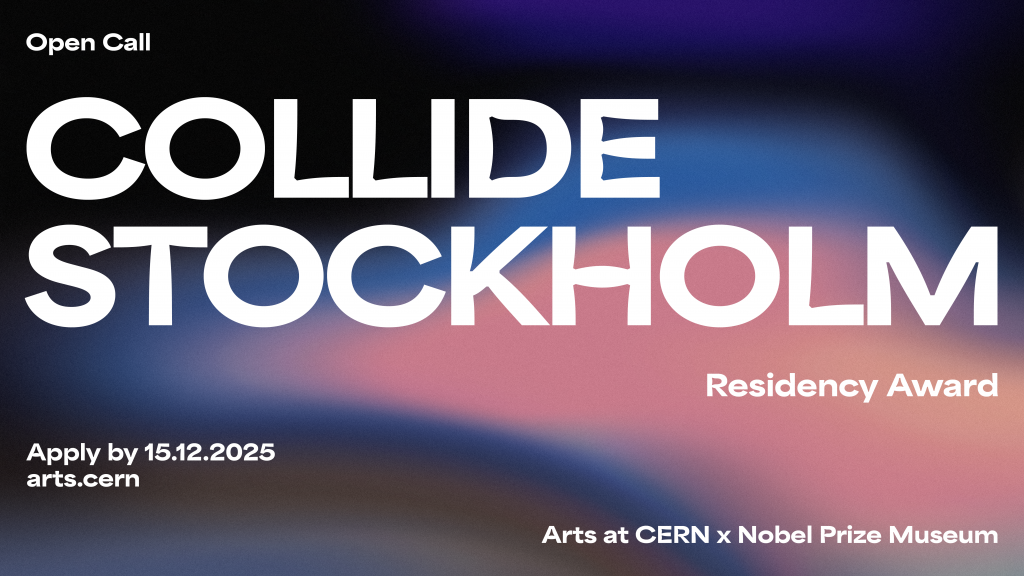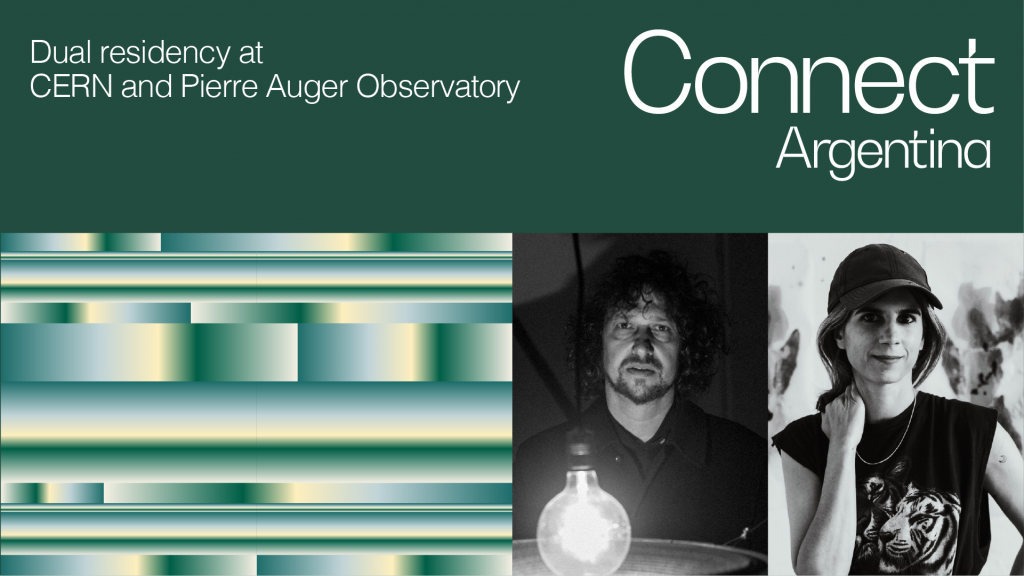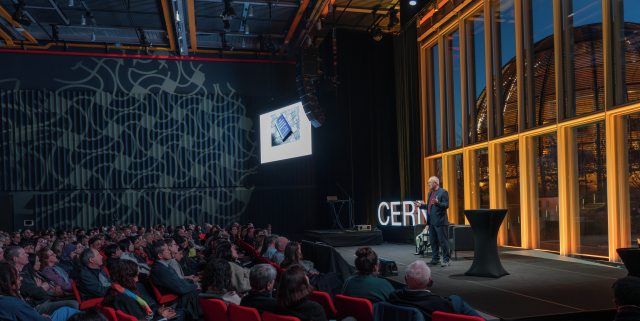- Tags
- Artworks, Collide, Exhibition
- Author
- Ana Prendes
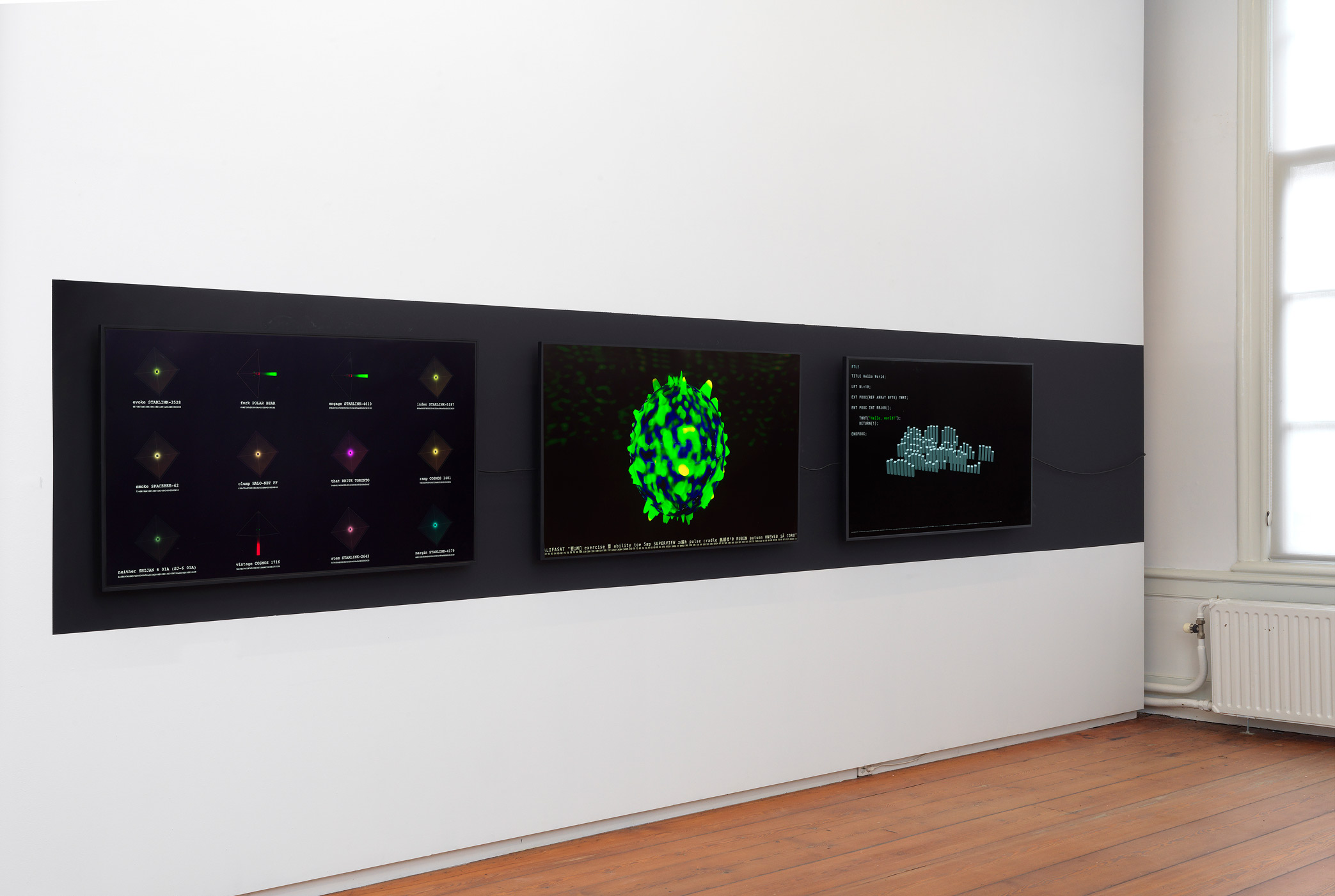
Heemskerk’s solo exhibition Hello, world! at Upstream Gallery delves into her artistic exploration of a universal language, developed during her residency at CERN and Copenhagen Contemporary
Since the 1990s, Joan Heemskerk has been recognised for her pioneering work with the net art collective JODI, positioning herself at the forefront of critical inquiry into the structures of our information-driven society. Her practice radically challenges the codes and languages of the Internet, computer programs, and video games. Working across media such as video, software, games, websites, performance, and installation, Heemskerk disrupts the conventional relationship between technology and its users, challenging our expectations of the systems we rely on daily.
In this critical engagement, Heemskerk also speculates about the future. Her solo exhibition Hello, world! draws on her artistic explorations during her residency between CERN and Copenhagen Contemporary as the winner of Arts at CERN’s Collide Copenhagen residency award. Immersed in the scientific communities in Geneva and Copenhagen, Heemskerk explored the possibility of creating a new universal language —one that could transcend barriers across galaxies and life forms—through a re-examination of the ubiquitous Hello, world! string used in computer languages.

The exhibition presents new works that span video, websites, installations and ‘drawings,’ where the iconic string recurs in various encrypted forms. The website Hello, world! (2024) features about 900 iterations of the phrase written in a wide array of programming languages from the 1970s to the present. These lines of code are transformed into three-dimensional cubes, resembling a sprawling virtual cityscape. Shorter scripts take the shape of streets, while the longer, often older languages, expand into entire cities. This digital architecture offers a visual exploration of the evolution of programming languages, mapping how computational communication has progressed over time.

Other works speculate about the materiality of data storage and transmission. The video Magnetic field study (2024) and the clay magnetic sculpture Tablet (Hello, world!) (2024) reflect Heemskerk’s investigation into the CERN Tape Archive. Here, she contrasts modern data storage systems—where all data is written in binary and recorded via the magnetic polarities of iron, nickel, or cobalt—with ancient methods like clay tablets. Drawing inspiration from the Rosetta Stone, Heemskerk imagines Hello, world! as a potential tool for decoding all digital content in the distant future. To represent this, she embedded the binary output of the phrase into clay tablets, combining permanent magnets with iron filings. Once baked, these tablets form a solid-state storage system—a speculative means of preserving digital information for future civilisations and species, much like clay tablets safeguarded ancient records.
In her installation entangled binary network (Hello, world!) (2024) envisions a speculative quantum internet network connecting two entangled fields. It symbolises the cryptographic characters Alice and Bob exchanging the message Hello, world! in a non-binary format. The ultraviolet-lit environment references quantum experiments conducted at CERN, where scientists use UV light to manipulate quantum systems and create entangled networks. The hydrogen atom becomes a metaphor for binary computation, drawing on its electron’s spin states as a tool to illustrate the concept of binary computing for future humans, AI, or alien life forms.

Drawing on her residency at CERN, Heemskerk’s Hello, world! deepens her exploration of digital systems, cryptography, and data transmission and storage, projecting these into speculative futures of quantum computing and non-binary communication. Her latest works invite us to join her in the search for a universal language. As Heemskerk envisions it, the ubiquitous Hello, world! string in computer languages might become a future Rosetta Stone, capable of decoding all our digital data—one that might connect future generations, non-humans, and computers.
Hello, world! runs from 23 March 2024 to 26 April 2024 at Upstream Gallery Amsterdam.
